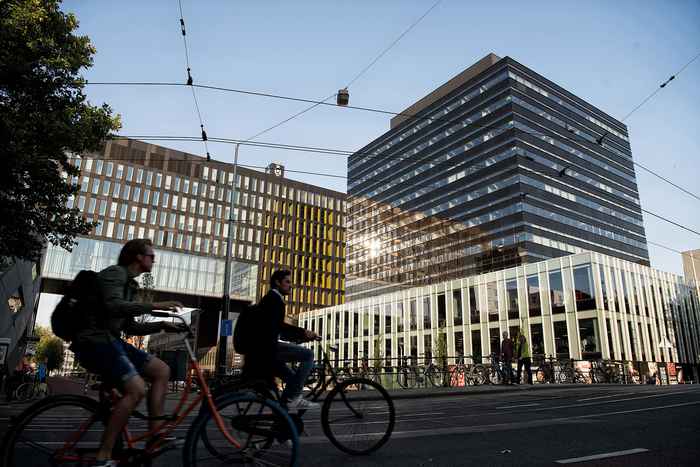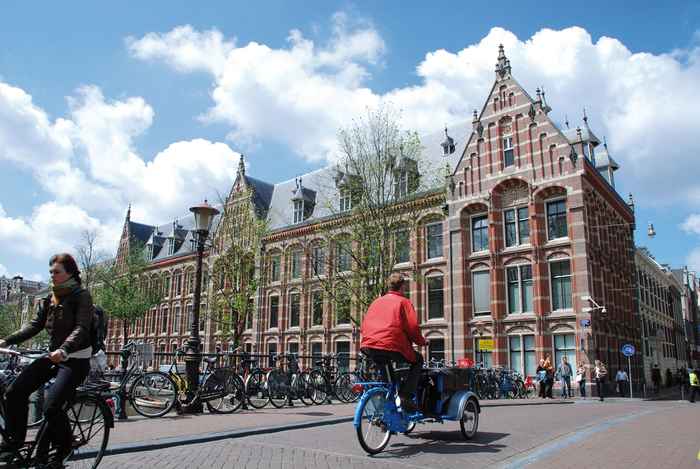Institutional Financialization: Academia’s Historical Immersion into the Marketplace
A profile on CUS seed grant holder Sean Lewis
8 January 2024

Sean’s PhD research is on university property development and campus evolution, and how it has changed over the past decades. Having a background in private sector real estate development, he has personally noticed increasing similarities between the real estate efforts of universities and that of private sector firms.
Significant changes since the 1980’s
One of the ideas that drive Sean’s research is the hypothesis that university campuses have undergone fundamental changes since the 1980’s, one he argues goes beyond changes that can be expected simply in time passing.
“The UvA was founded in 1632. My employer, Columbia University, was founded in 1754. For centuries, the university campus appears to have followed an individualized yet standardized growth pattern, and then from the 1980’s onward universities have undergone significant changes in how they operate and develop. I am interested in why this has happened and how.”

Many universities are evidencing an increased focus on merging the monetary interests of private firms with the research sector’s goal of innovation.Sean Lewis
From government funding to participation in the market
Sean’s research utilizes a case study method, two of which have been completed with the help of the CUS XL seed grant. Over the past year, he has been conducting archival research into the financial history of both the University of Amsterdam and London School of Economics. His findings reveal a systematic diminishing of government funding over the past decades.
Universities used to operate separately from the market. Sean’s research into the financial archives of the UvA and LSE finds that as government contributions have lessened exponentially over the years, these institutions have had to reorient themselves toward third party organizations and as a result, become increasingly enmeshed with market interests. This enmeshment with market interests is reflected in the physical spaces of university real estate, according to Sean.
Increased focus on monetary interests
When comparing his case studies, Sean explains that market influence on university real estate can take different forms. When examining the UvA, for instance, Sean highlights the JK building at Roeterseiland and Humanities Hub in Oudemanhuispoort.
“Once the private sector is involved, there are often strings attached. This may be reflected in some of the new and evolving spaces on the UvA campuses, like the JK building at Roeterseiland or the Humanities Hub at Bushuis. Many universities are evidencing an increased focus on merging the monetary interests of private firms with the research sector’s goal of innovation.”

In the case of LSE and other UK university campuses, he observes a more commercialized turn. “Certain UK university campuses appear to have become more commercialized at an earlier time. What used to be university book shops where students could buy curriculum are now merch shops where one can buy T-shirs and other miscellaneous items. Where there were once coffee bars close by but off-campus, these are increasingly on-campus.”
Reflecting on the social and societal impact, Sean wonders if these changes in funding - and as a consequence, in real estate – have implications beyond the immediate student experience. He argues that investment in market interests means academic pursuits are no longer a university's main priority. As other factors such as operations, revenue generation and functionality become more pervasive, research and education may fall into the background.
“The idea that a university is funded so that it can operate outside of the market is gone, and now that it is forced to participate in the marketplace, it’s going to have a great impact. What that impact will be is still unfolding and remains to be seen.”